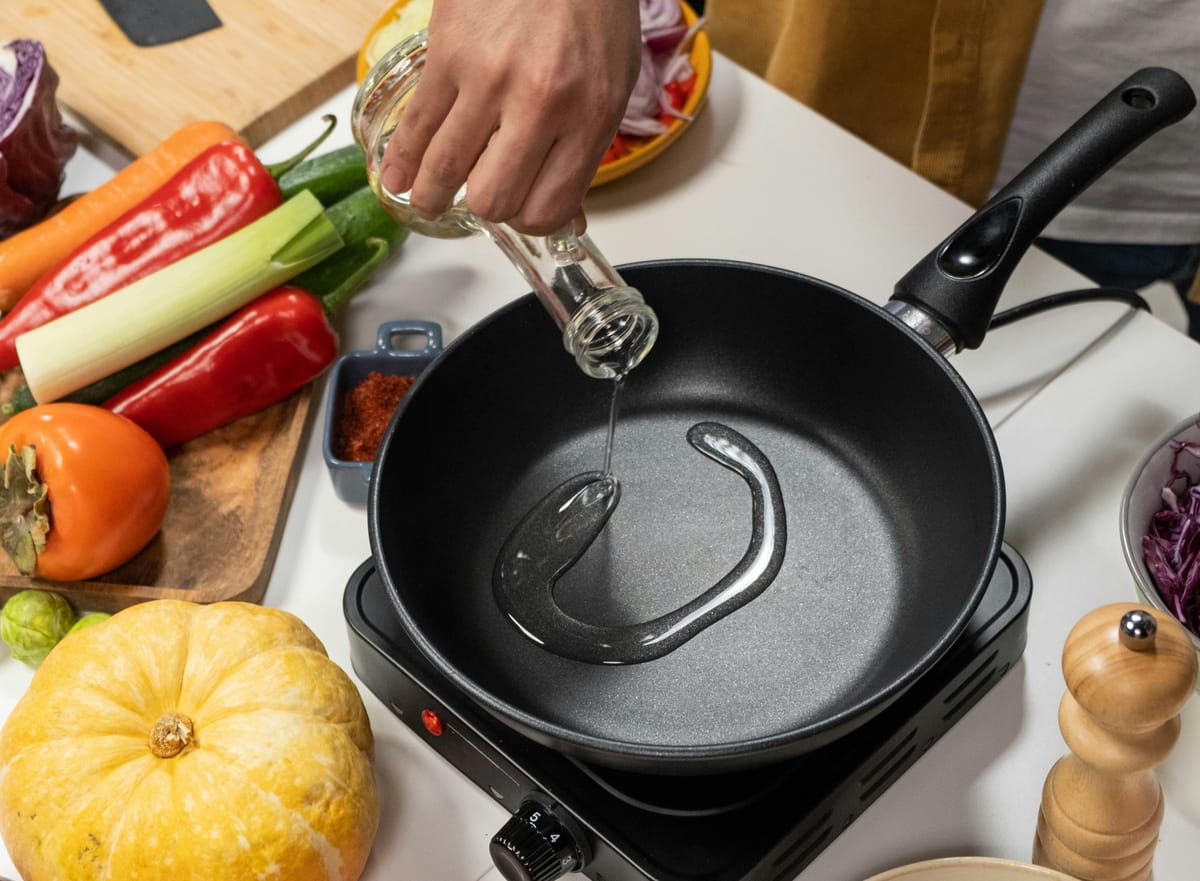The Truth About Seed Oils—And What Oils to Actually Use
Are seed oils really as bad as the internet says? Or is there more to the story? This quick, science-backed guide holds the truth, so you can stop stressing over one ingredient and focus on what actually matters for your health. Curious? Keep on reading.

Seed oils are having their 15 minutes of fame. Depending on who you ask, they’re either heart-healthy heroes or toxic villains destroying your body from the inside out. Truthfully, they’re somewhere in between. Let’s break down the hype and how to choose the right one for you.
What Are Seed Oils?
Seed oils are exactly what they sound like: oils extracted from the seeds of plants. You’ve probably got at least one of these in your kitchen right now:
- Canola (rapeseed) oil
- Sunflower oil
- Safflower oil
- Soybean oil
- Corn oil
- Peanut oil
- Grapeseed oil
- Cottonseed oil
They’re everywhere because they’re affordable, have a neutral flavor, and can handle high heat. That’s why food manufacturers (and home cooks) use them so much.
The Nutrition Lowdown
Seed oils are:
- High in unsaturated fats (mostly omega-6s, and in some cases, omega-3s and monounsaturated fats)
- Low in saturated fat compared to butter or coconut oil
- Sometimes rich in vitamin E and antioxidants
Health organisations like the American Heart Association have long recommended using these oils to replace saturated fats. This swap tends to lower LDL (bad) cholesterol and reduce heart disease risk.
So, Why the Controversy?
As any TikTok trend, there are both benefits and downsides to your health. Here are some of the possible downsides:
Omega-6s and Inflammation
Some say seed oils are inflammatory because they’re high in omega-6 fatty acids. But omega-6s are essential fats.
The problem isn’t that we eat them but that most of us eat way too many and not enough omega-3s. Balance is what matters here.
Processing and Chemicals
Most seed oils go through a process to make them last longer and taste better. This can include things like removing smells, changing the color, and using a chemical called hexane.
But the tiny amounts left over are so small, they’re not considered harmful.
The real issue is that these oils are often found in highly processed foods, which aren’t great for your health overall.
So it’s not the oil by itself that’s the problem. It’s everything that comes with it.
Seed Oils = Chronic Disease?
Just because seed oil use increased around the same time chronic diseases did doesn’t mean it’s the cause.
It’s more likely due to ultra-processed food, sugar, and sedentary lifestyles.
Social Media Hype
The term “hateful eight” was made for clicks, not science.
Fear-mongering posts and bold claims spread fast, but most of the research tells a more boring story: seed oils aren’t toxic. They’re just another type of fat.
So… Which Oils Should I Use?
You most probably use oil while cooking every day. So let’s get practical. Here’s what to keep in the kitchen:
Greatest choices:
- Canola oil – Mild taste, high in monounsaturated fats, and a small dose of omega-3s.
- High-oleic sunflower oil – Great for high-heat cooking with more stable fats.
- Soybean oil – Common and surprisingly nutritious, with omega-3s.
- Olive oil – Technically not a seed oil, but a heart-health MVP.
- Flaxseed or sesame oil – Use cold. They’re delicate but full of antioxidants and omega-3s.
Use less often or avoid:
- Ultra-processed foods – It’s the whole food matrix that’s the issue, not just the oil.
- Tropical oils (like coconut or palm) – High in saturated fat; not ideal as daily staples.
- Animal fats (like butter, lard) – Fine in moderation, but not heart-health champions.
Final Thoughts
Seed oils aren’t the bad guys. When you use them in smart ways, like instead of butter or lard, they can be part of your healthy, balanced diet. Want to feel better and take care of your body? Stick to mostly whole foods, mix up your fats, cut back on ultra-processed stuff, and try to get in some omega-3s from fish, flax, or chia.
No single food will make or break your health. So don’t stress over one ingredient. Focus on what makes you feel good, one simple choice at a time. You’ve got this.